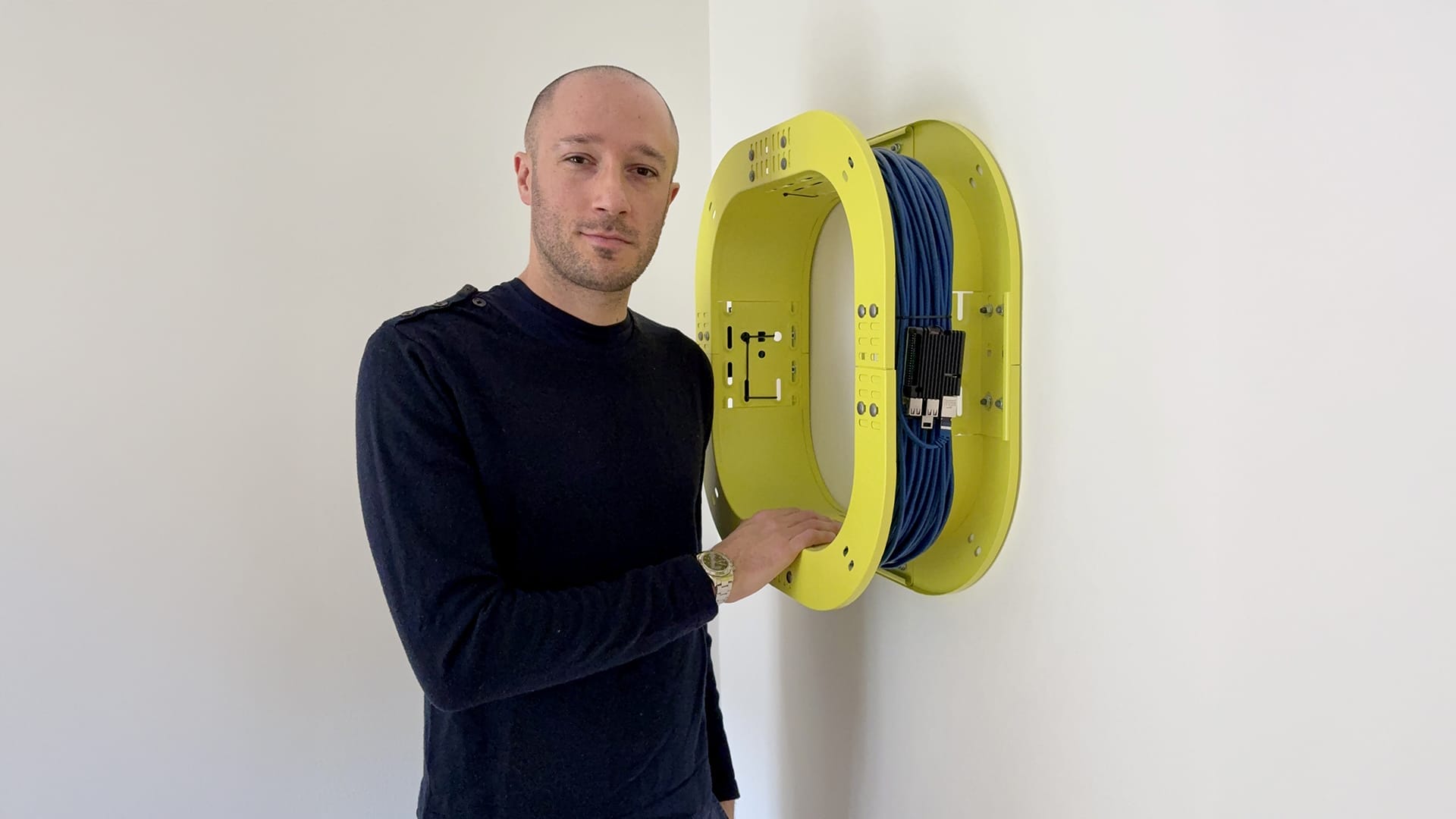
EJTECH (Judit Eszter Kárpáti, Esteban de la Torre, Tamás Melkovics), Age of String, at Horizont Gallery, Budapest
“Age of String” by EJTECH (Judit Eszter Kárpáti, Esteban de la Torre, Tamás Melkovics), at Horizont Gallery, Budapest, 17/04/2024 – 22/05/2024.
The blades have survived the millennia, but the strings have rotten away. Stone hammers and bronze arrowheads patiently await to be excavated, yet the fundamental framework of string technology remains unacknowledged. A technology woven so deeply into everyday life, that it seems to disappear completely. Prehistoric layers of time are defined by the increasing capability of humans to shape matter into tools. What archeology has delineated as the Stone Age should be referred to as the String Age; the dawn of the ability of mankind to extend a hunters reach via ropes, to expand carrying capabilities of a gatherer with a pouch, to insulate the body from the weather with a fabric. The foundational cognitive skill of amalgamating two hard materials into a single tool by tying them together with a crafted soft material. The jumpstart of this complex process demonstrates ‘infinite use of finite means’, effectively weaving the fabric of civilization. The return to unearthing this tacit knowledge and perceiving such concepts becomes a source for basing a contemporary spirituality and recalibrating social constructs. A possibility to discard an outdated, unbalanced belief system, and make way for fertile new mythologies. The tacit, un-applauded, technology of string. The oldest found string remnants date back to around 50,000 years. Archeological proof of an ancient technology that extended the capability of human hands and built the capacity of human minds. From twisting three bundles of fiber into a string, and spinning this string into threads and ropes, the structure becomes more and more complex. Multiple ropes can become interlaced into knots, and knots into networks, into textiles and into fabrics. The fractality of this process requires a cognitive complexity equal to that required by human language. Pre-hispanic cultures in the Andes developed an ancient operating system, a code and a language called Quipu; an intricate system of knotted strings which store and convey information. Fiber type, knot direction, or color all held embedded meaning that could be edited and transported easily. These string computers predate the Inca civilization by 4000 years and to this day deciphering this language still eludes scholars. It is rumoured that Quipu also served as musical notation storing songs and melodies. It is in the modern western world where music is performed to a passive audience. Music and chants have always been an integral part of a community, where all involved actively perform music together. The vibrational force of sound weaving bodies and breaths into a joint collective experience. We present a space that encompasses uchronic fictional archaeology, where techno-spiritual ritualism can blossom from an underlying dynamic system. We raise a modular menhir of vital materiality where touch incites matter into motion treating sound as a territorial marker where space is activated. Our realization takes form in a multilayered environment enabling the potential to construct new mythologies. An activity that affects the overlap between space, matter and body. Ecology of knowledge systems. Ecology of sentient matter.








fakewhale
Founded in 2021, Fakewhale advocates the digital art market's evolution. Viewing NFT technology as a container for art, and leveraging the expansive scope of digital culture, Fakewhale strives to shape a new ecosystem in which art and technology become the starting point, rather than the final destination.
You may also like
Lorenz Wanker, Trau dich grossartig zu sein at Galerie OK-KunZT, Klagenfurt
Trau dich grossartig zu sein by Lorenz Wanker, curated collaboratively by the artist and the venue o
Fakewhale in dialogue with Marcello Maloberti
With his new project METAL PANIC, showcased at PAC in Milan, Marcello Maloberti transforms the space
Collector’s Frame #1: LORENZO PERINI NATALI
With this first chapter, we are launching a new editorial series by Fakewhale, entirely dedicated to




